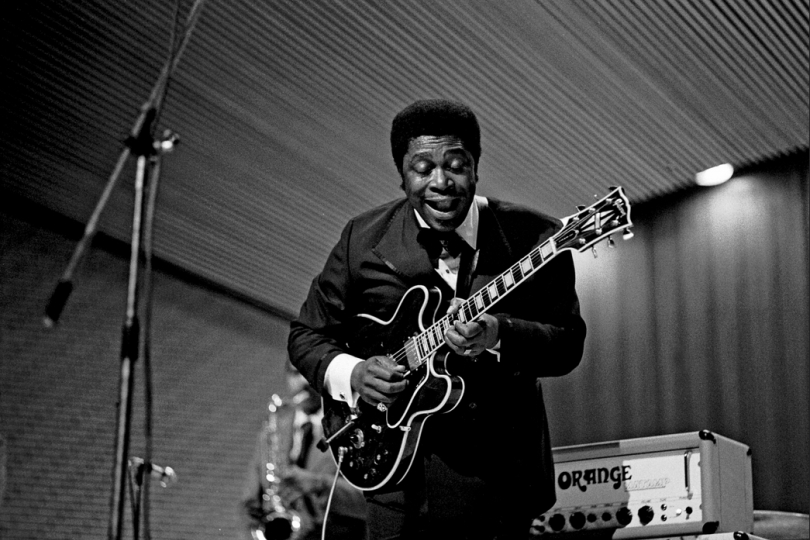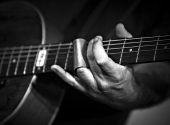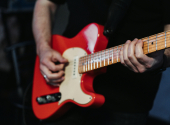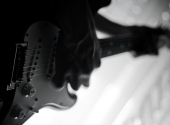
(Un)usual Guitar Techniques #1: Vibrato
This new series aims to give you a peek "under the fingers" of your favourite guitarists. If you're just starting out with solo guitar yourself, or have already played a few solos, you may feel inspired by the vast array of expressive tools and techniques you could try out. We'll be particularly interested in the strange magic between the strings and fingers that creates the unmistakable expression of each player. Therefore, this won't be a series about gear, but about why you would recognise Jeff Beck or David Gilmour, no matter which instrument they played... and why they would get their unique sound out of any instrument.
The first means of expression we will look at is vibrato. There's a reason for this because few things give a beginner away as easily as straight, strummed notes without vibrato. This is because it is the basic tool you can use to give character to your tone. Just as vocalists often have a signature vibrato, the same is true for guitarists – the way you vibrate your tone can be part of your "signature sound". Or, conversely, it can be a very subtle and effective way to bring emotion into your playing.
First, some theory...
To begin with, it doesn't hurt to review the concepts. Vibrato comes from the Latin "vibrare", which literally means to shake, tremble or vibrate. In music, vibrato refers to a regular change in pitch, so we use vibrato to slightly down-tune and up-tune a string in a regular rhythm. Beware, however, that it is often confused with tremolo, which refers to a regular change in the volume of a note – probably because, among other things, the "whammy bar" on a guitar is often also referred to as a tremolo bar, even though we actually use it to play vibrato.
Thanks to the vibrato, the tone seems to come alive, acquiring a similar quality to the human voice, which also naturally vibrates with a longer tone. You may have come across the description that "the guitar sings" – this is probably due to the perfectly mastered vibrato, which is particularly evident in slow, melodic playing.
How does it actually work?
There are several ways to make the played note vibrate. The first is the so-called classical vibrato, which is created by firmly squeezing the string and swinging the hand from side to side, in the same way as with bowed instruments. However, this method is not used much in solo playing. The use of a vibrato bar is more common, but we'll leave that for a separate part of this series and today we'll focus on the most popular way of playing vibrato. It is created by a circular motion in the wrist, where you pull the string up and down alternately. This is basically the same motion as the usual string-pulling motion in solo playing.
The two basic variables that determine the character of a vibrato are speed and range, or how much you deviate in intonation from the fundamental tone. It is very important, however, to always return to the base tone so that the whole does not feel out of tune. It also feels more natural not to start the vibrato immediately after strumming the string, but to let the full tone come through for at least a moment. Also, it is a good idea to choose the appropriate type of vibrato for each playing style.
Where to get inspired?
Most guitarists use vibrato in their solos, but for some, it has become part of their typical sound. Angus Young (ACDC), for example, plays a characteristic short, fast, energetic vibrato that perfectly enhances his raw sound. B. B. King, on the other hand, is a regular winner of the internet polls for the most beautiful vibrato with his clean, trembling tones that seem to be coming alive. Eric Clapton has his own particular energetic style of playing vibrato using the movement of his whole arm. Jimmy Hendrix, Ritchie Blackmore, Jeff Beck, Eric Johnson, Dave Gilmour... the list is basically endless.
When listening to your favourite guitar tracks, try focusing on the vibrato and how much it contributes to the overall expression. You might be surprised at how many different ways a trembling tone can be played.
How to practice
Now I hope you're eagerly picking up your guitar to give it a try... If you're starting out, start slowly, preferably with a metronome, and watch a few videos beforehand to get a good feel for the basic hand movement. Later try playing vibrato with all your fingers in different positions on the fingerboard and feel how the character of the tone changes. Experiment, find what tempo and what amount of string vibration suits you.
If you've been playing for a while and you have a style, try to leave it for a moment and imitate the vibrato of one of your favourite guitarists. In this case, learning from the masters applies twice as much for both beginners and advanced players.
There is no such thing as a universal vibrato. The more closely you listen to and try to imitate the different forms of vibrato, the more your palette of possibilities expands. And as B. B. King says in this amazing video: "Everyone who plays must practice."
If you have found an error or typo in the article, please let us know by e-mail info@insounder.org.





